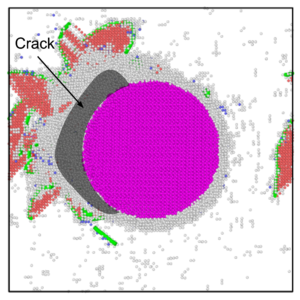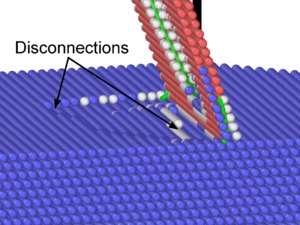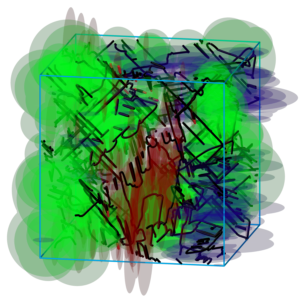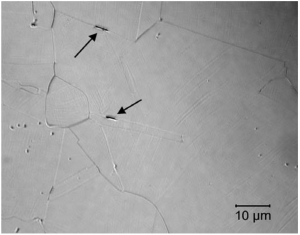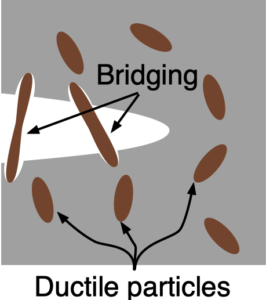Research topics of interest:
Multiscale materials modeling: atomistic (classical molecular dynamics), mesoscale (discrete dislocation dynamics, Monte Carlo, phase field, lattice Boltzmann), macroscale (finite element methods)
Fracture and toughening: ductile fracture of metals; intergranular fracture; fracture in laminated composites; fracture and toughening in ceramics; cohesive zone/surface modeling
Crystal plasticity: dislocation-based, twinning-induced, and transformation-induced plasticity; hardening and strengthening mechanisms, including strain, precipitation, and solid solution strengthening
Hydrogen and helium embrittlement: helium bubble formation, growth, migration, and rupture; hydrogen-defect interactions; helium-defect interactions; grain boundary fracture; embrittlement of structural stainless steels
Crystalline interfaces: atomic structure of interfaces; interfacial line defects (dislocations and disconnections) and interactions with bulk dislocations; interfacial migration; grain boundary phases/complexions; fracture of interfaces
Analysis of atomistic simulations: identification of interfacial line defects (published a tool called ILDA); machine-learning-based atomic structure analysis (developing a tool called ATOMIC); collaboration with OVITO
Neural-network-based surrogate modeling: physics-informed neural networks; equivariance; coupling neural networks with the finite element method; encoder-decoder architectures
Fluid-particle systems: packing of particulate/granular systems; pore size distribution and analysis; fluid-particle interactions; colloidal suspensions; particle-laden emulsions; fluid phase separation

